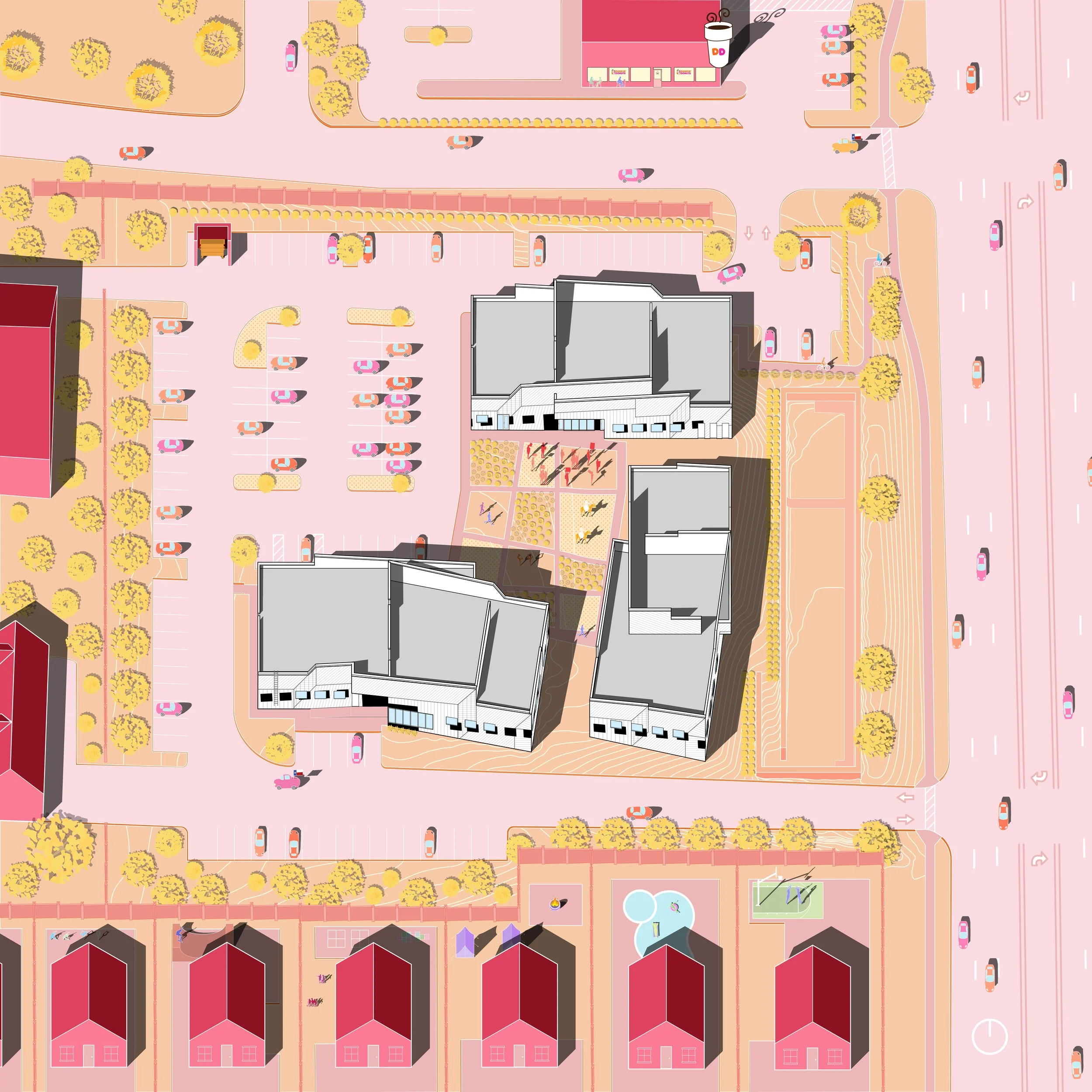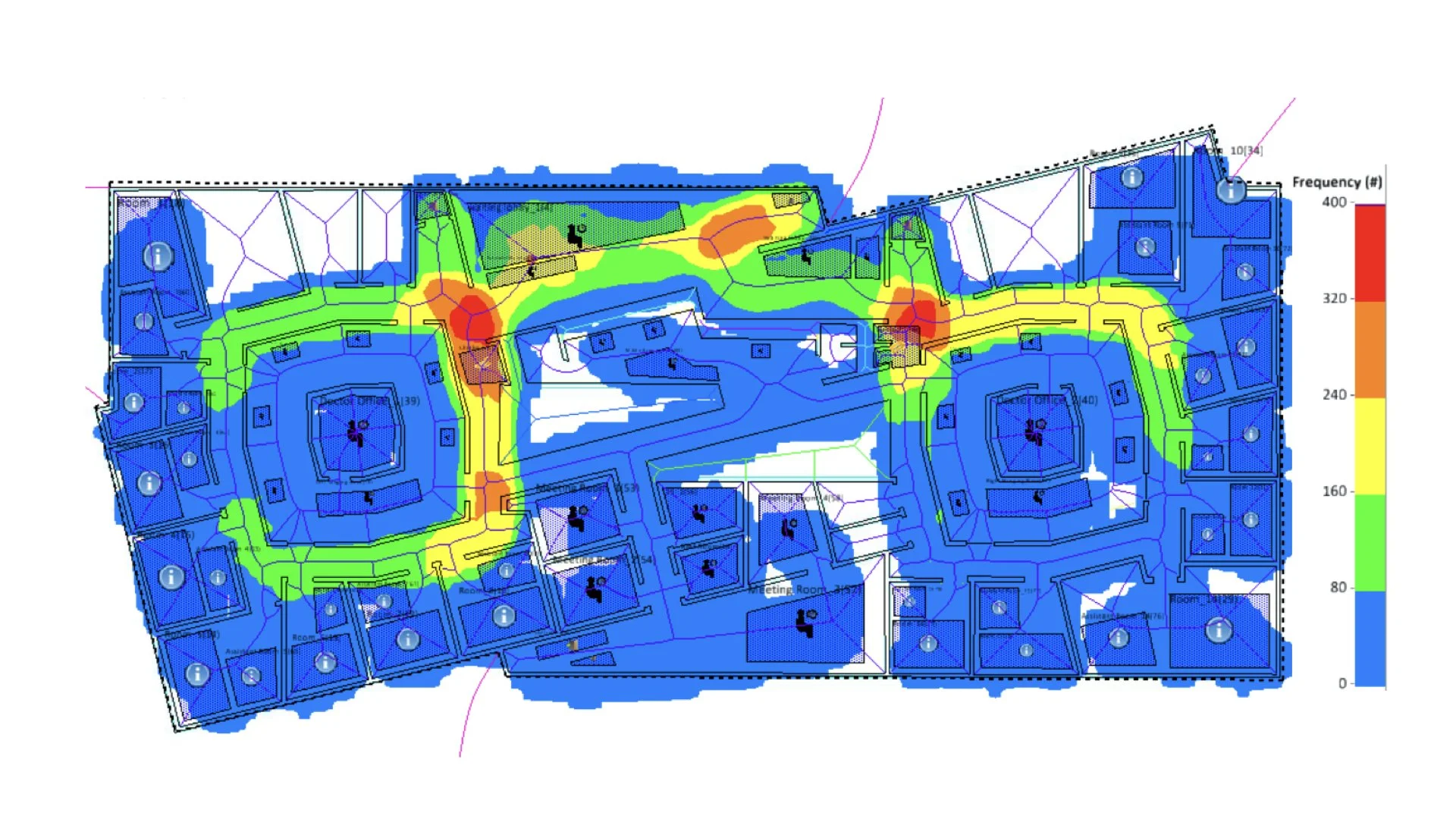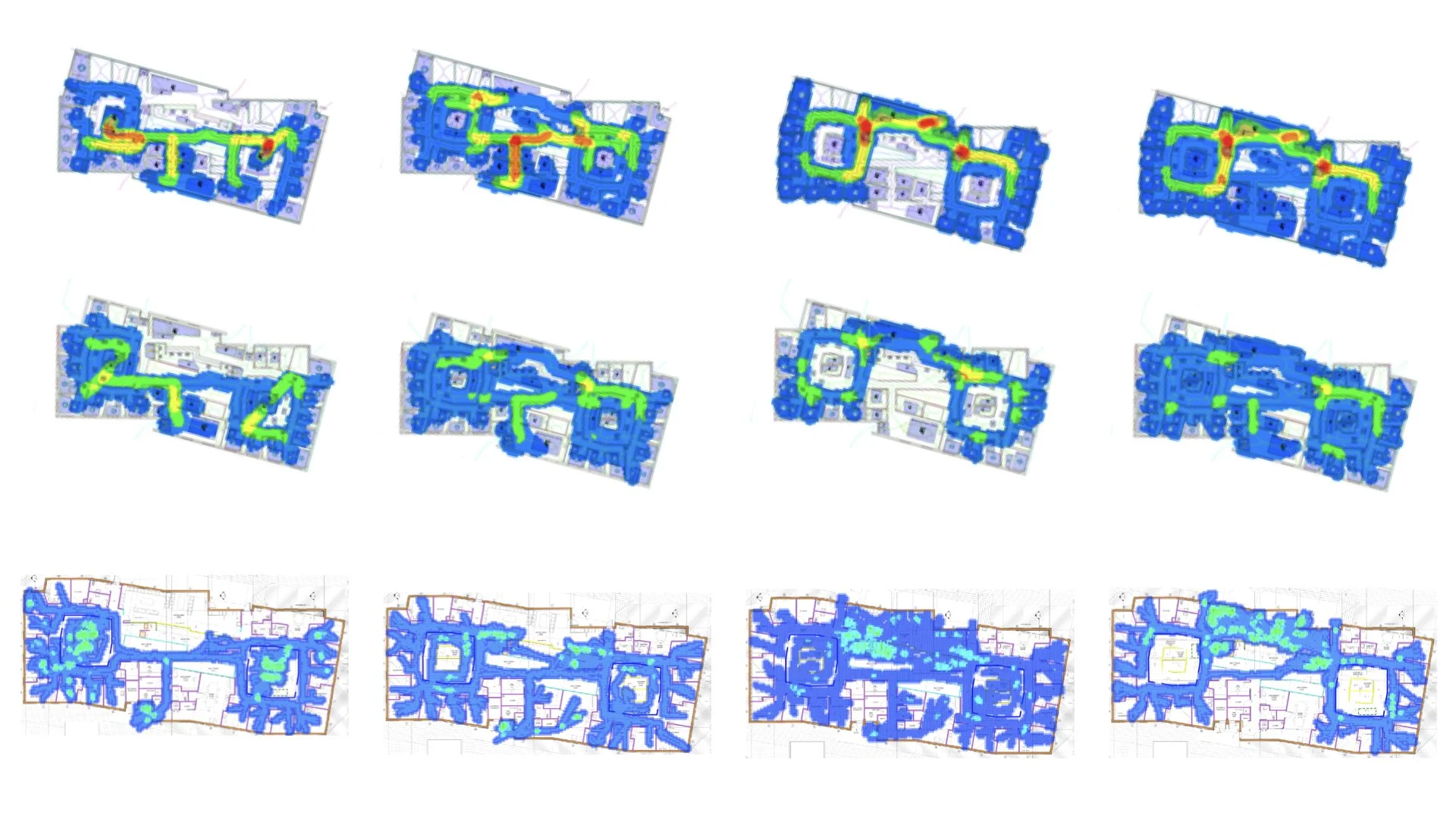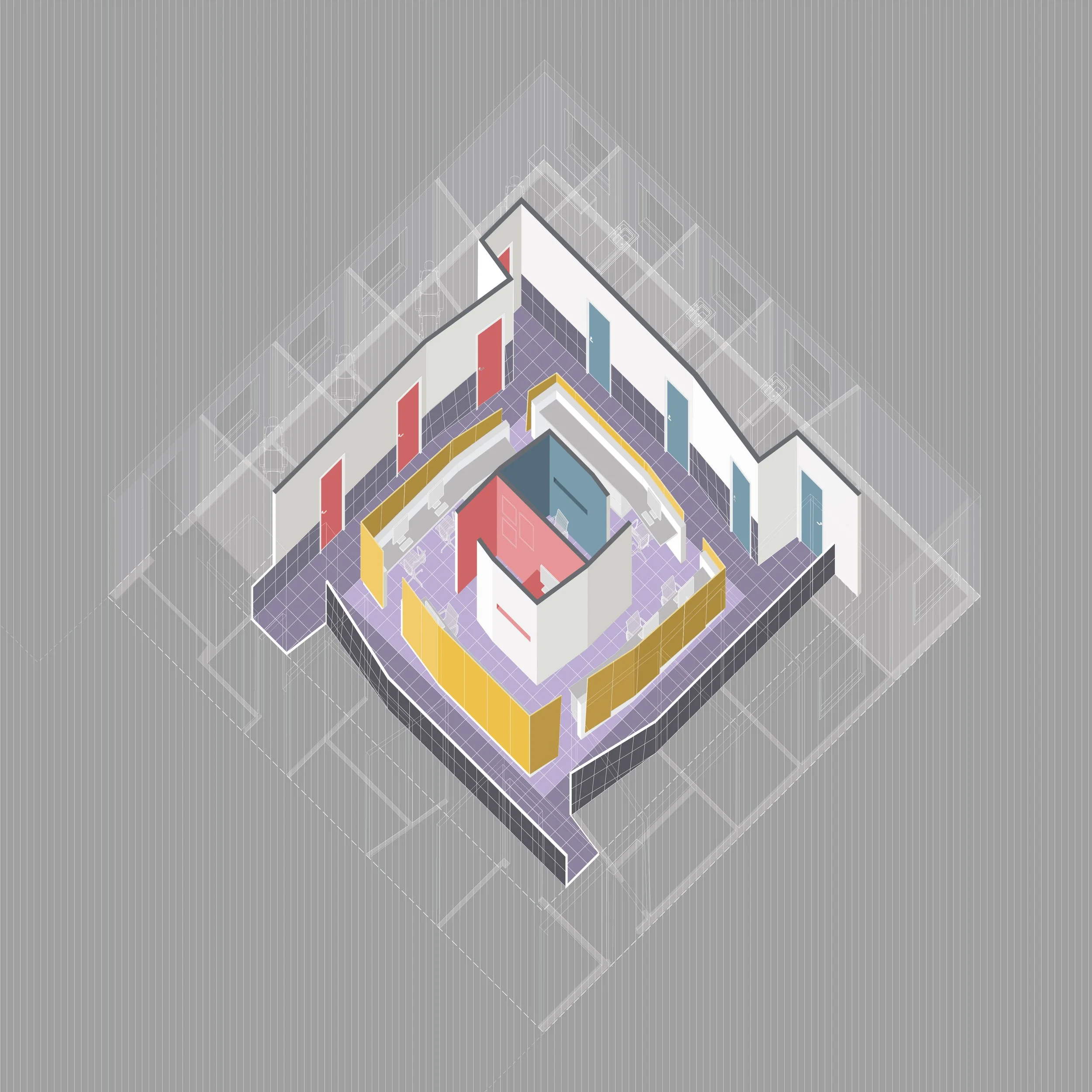NORTH.STAR MEDICAL CAMPUS
Northstar Medical Campus is a 24,000 square-foot development located in North Richland Hills, Texas. The three-acre medical campus comprises three single-story medical office buildings, all designed by AN.ONYMOUS, that are arranged around a public plaza and surrounded by landscaped grounds. Building 2, housing Northstar Dermatology clinic, a 9,000 square-foot office building, is the primary building on the expansive site, which was completed in January 2022. The other two buildings, Building 1 and Building 3, are forthcoming and scheduled to be completed by 2024.
The project, through its novel application of simulation tools and representation techniques, not only challenges the conventions of architectural design process, the planning and organization of medical office spaces, but also the use of vernacular building materials and construction techniques. The result is a dynamic environment that offers various forms of visual and physical interactions within the building, as well as with the architecture itself.
Site plan
Northstar Dermatology’s floor plan is divided into two overlapping rectangular areas that are slightly offset and rotated in relation to one another. Each rectangular area houses a clinical zone, including doctors’ offices, a nurse station, and multiple examination rooms. The floor plan was developed through a series of agent-based computer simulations (using Pedestrian Dynamics and AnyLogic software) that allowed the specific movement and behavior of doctors, nurses, patients and staff to be simulated in a digital environment. Rather than using the tools to test or validate an established scheme, the software were used as an experimental design tool itself. By setting the main spaces in a digital model and running the simulated movement of various healthcare users (patients, staff, doctors, nurses) multiple times, the performance was observed and the floor plan was continually modified to increase efficiency and reduce unwanted obstructions or interactions. The final plan is then a result of an iterative simulation process that not only incorporates the experimental method into the architectural design process, but also to creates an office where the circulation is better synchronized with the schedule and pattern of activities that occur throughout a typical day. In this way, the building, beyond a formal or aesthetic container, functions as a framework to improve the movement and interactions of various users in space.
Simulation study of Building 2
Simulation studies through the evolution of the plan
Building 2 Circulation Diagram, Northstar Medical Campus. The red represents the movement of doctors, blue the staff, and yellow the patients.
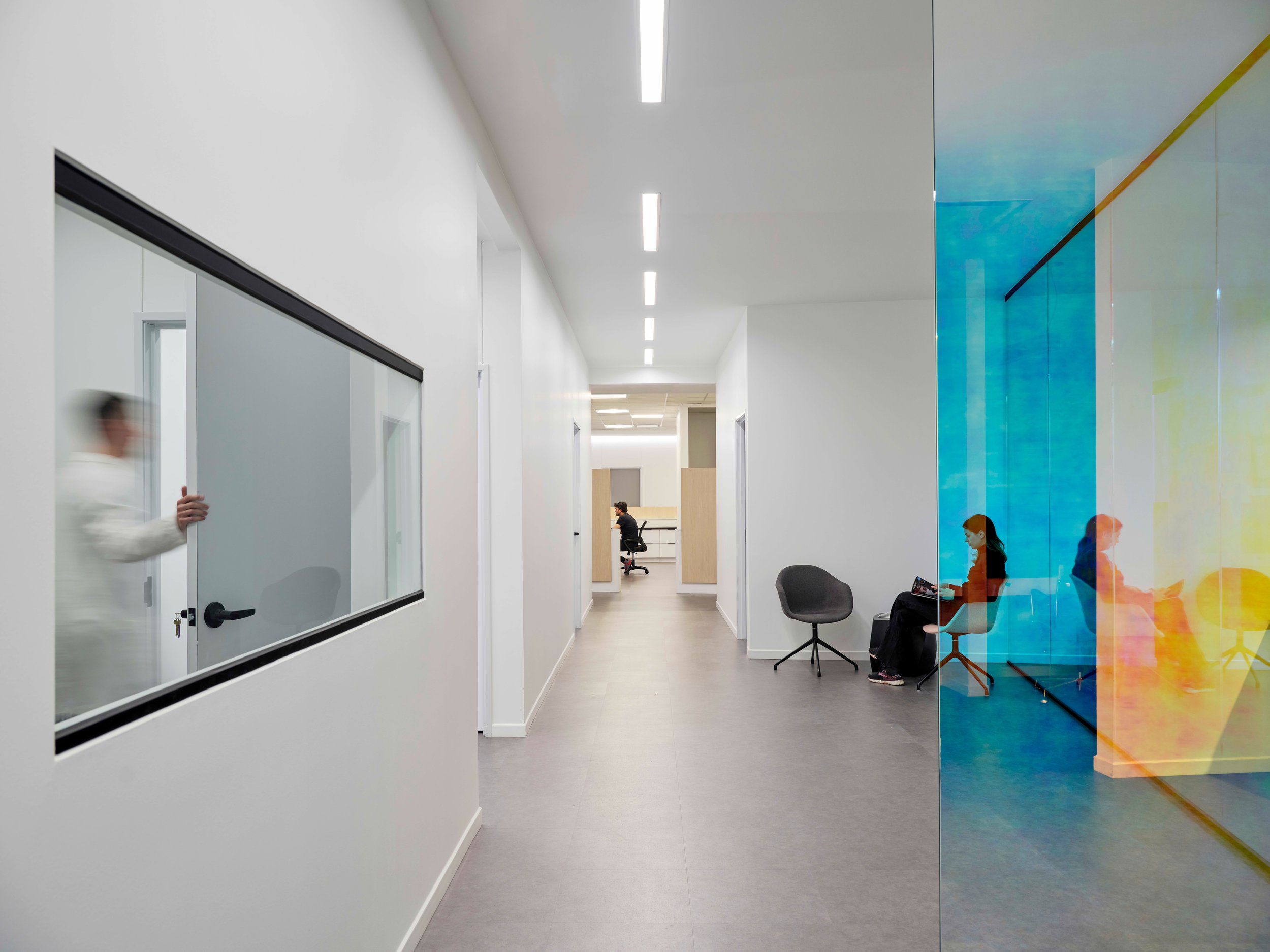
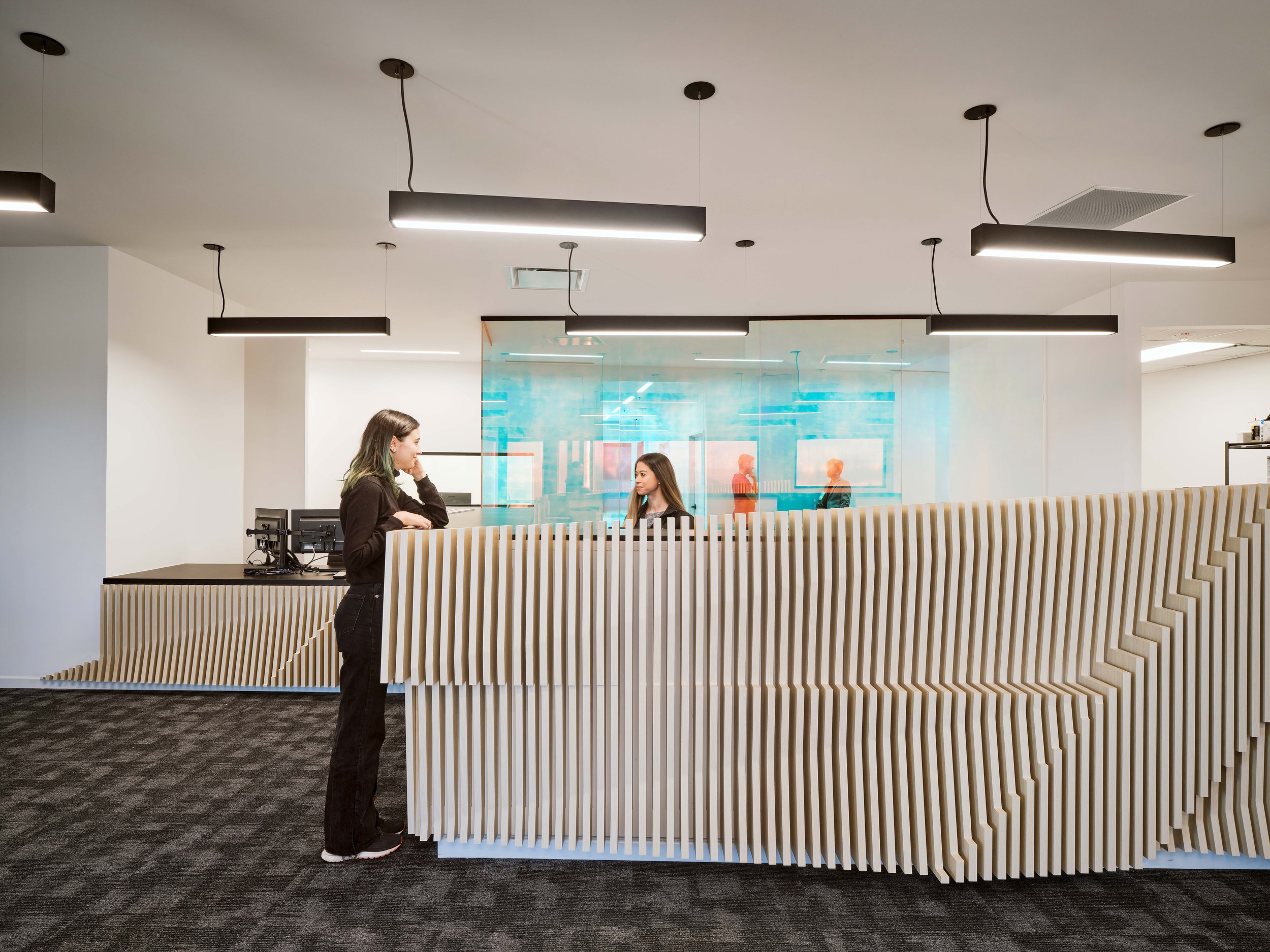
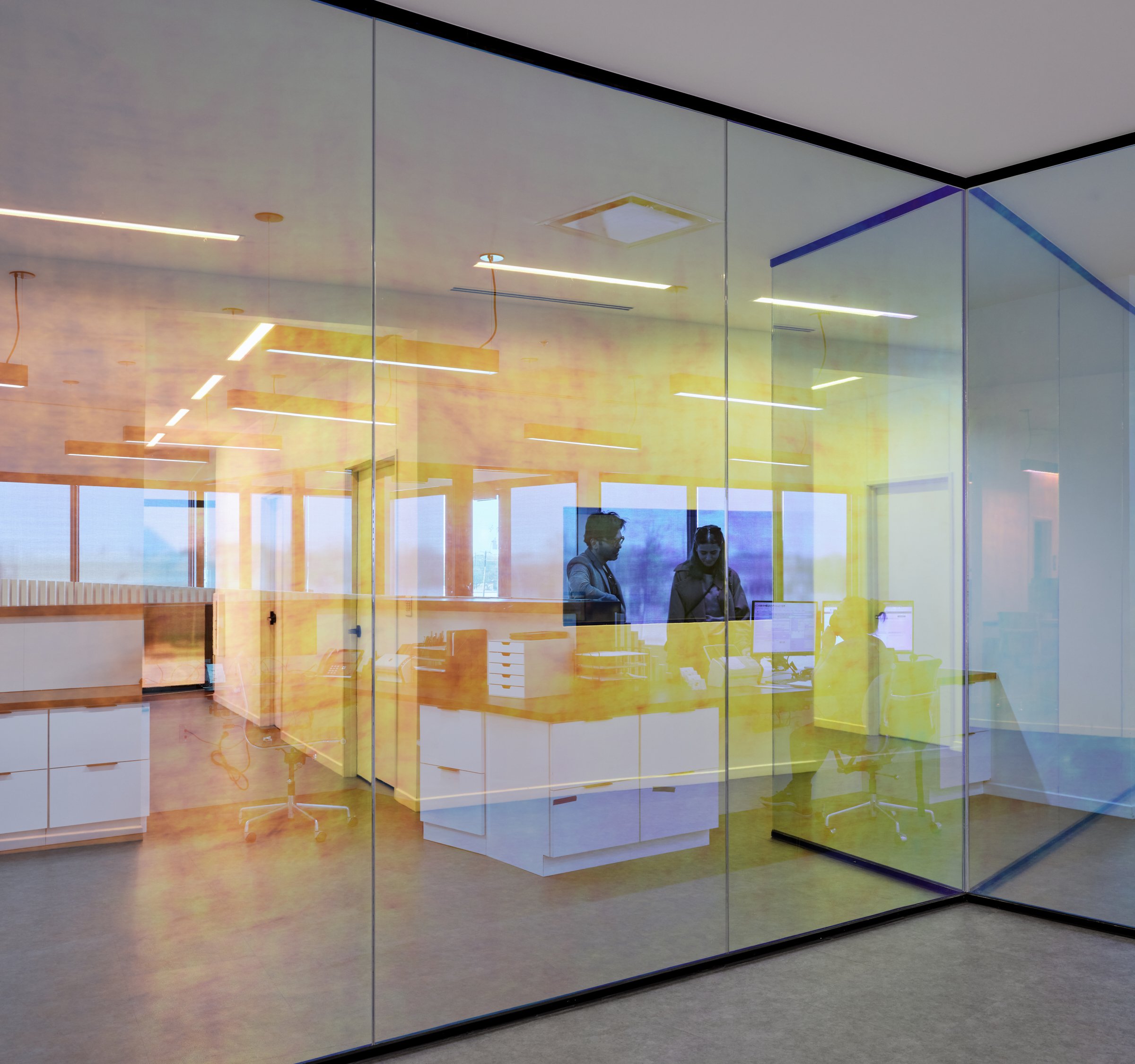

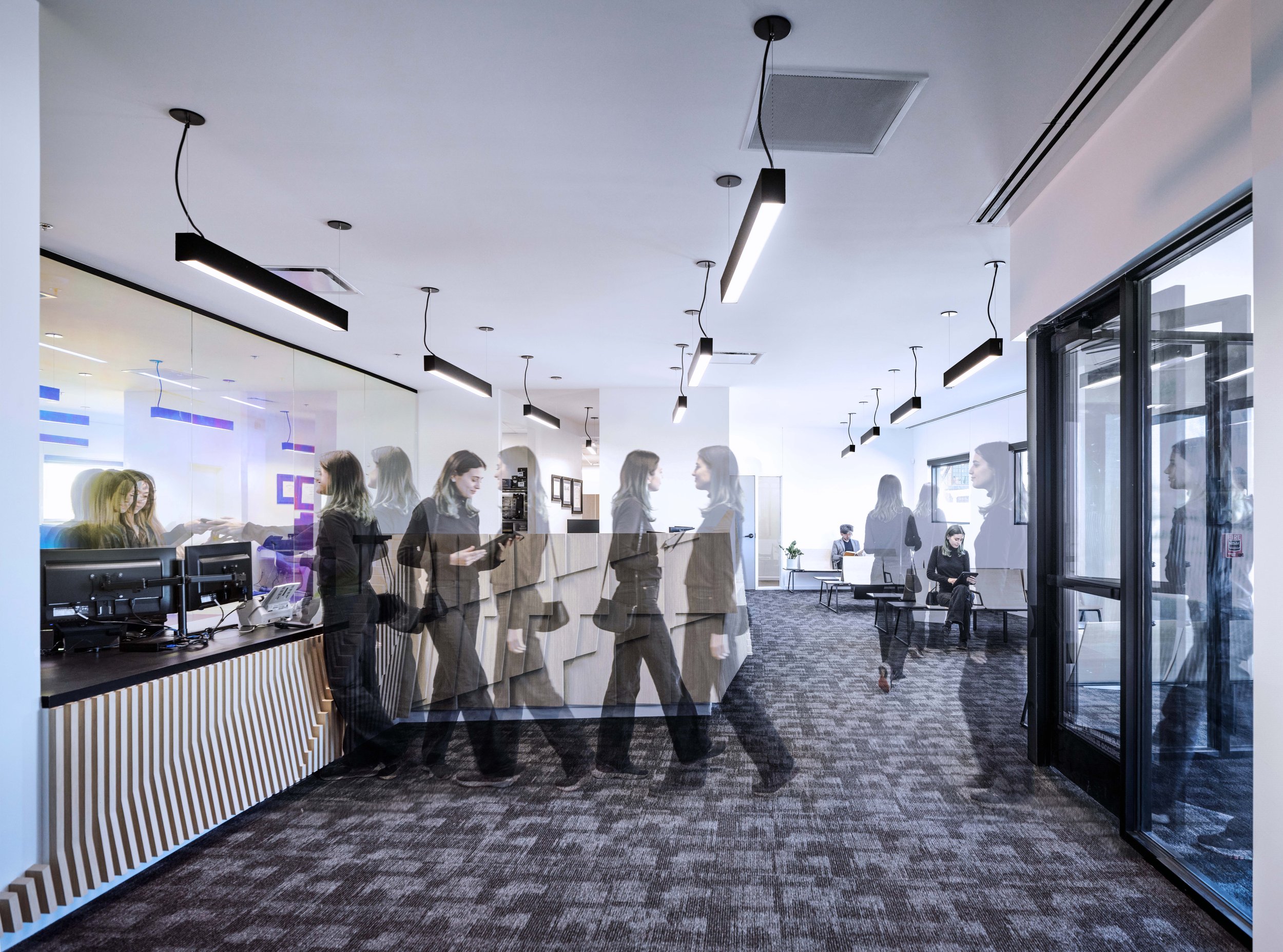
The central staff area is framed by a large custom-made white oak reception desk made of four hundred varying heights and individual CNC-cut panels. The same white oak material at reception is carried through to the nurse stations and the examination rooms, serving as a material interface between the patients and the clinic. The varying height of the wood panels in the reception area and nurse stations create openings to provide physical and visual connection on the sides that serve patients, and offer privacy on the other sides where staff work. Dividers made of glass and coated with a dichroic film separate the public reception area from the private staff areas. The private staff areas include the Office Manager’s office and the laboratory facing the central reception and staff area, IT and storage rooms, along with a laundry, staff lounge,kitchen and a separate staff entrance at the back.
Dispersed Plan of Building 2
The clinical zones each have an embedded rotation that distort their original square plan and create an alignment between the other clinical zone. This subtle rotation also transforms the square volumes of the interior into irregular octagonal ones that in turn facilitate circulation and communication around the nurse stations. The rotation is carried out not just within each building, but also between the three buildings on campus, creating an interplay between the building volumes forming a pinwheel around the central plaza. The central staff and administrative spaces occupy the shared area that connects the two clinical zones on either side of the clinic. Within the clinical zones, spaces are further divided in concentric arrangements, defining the circulation patterns and a system of visual communication and surveillance between doctors, nurses and patients: the doctors’ offices at the very center overlooking the nurse stations, and the nurse stations facing the patient examination rooms on the peripheries.
Northstar Dermatalogy Clinical Zone
The interior finishes and flooring signify and distinguish the public (patients) spaces from the private (staff) areas. The dark gray vinyl flooring of the public areas differentiate them from the light gray private areas, functioning as a form of wayfinding and signage that guide the patients from check-in and waiting room to exam rooms and check-out areas. At times, the two flooring types expose the discrepancy between the original plan and the final layout of the clinic, when the flooring defies the partitions and encroaches on another space, or ignores an edge and wraps up on the wall. These overlaps and misalignments of flooring materials, especially visible on the corridor floors and walls where the public and private zones meet, create the illusion of a “visual space” that is slightly different from the “physical space.” This visual effect makes the relatively narrow space of the corridor appear larger, guides the direction of movement around the nurse stations and towards the exam rooms, and helps users better navigate and circulate around the office.
Resembling brick in appearance, the glazed black and white brick facades of Northstar Dermatology are not structural but rather operate as a form of orthographic representation, using control joints as lines, the brick-veneer walls as surfaces, and the “shadow” Exterior Insulation and Finish System (EIFS) areas as openings or cut-outs. The finished product reflects light and colors, and given the position of the buildings on a hill, it produces varying effects throughout the course of the day. The thin brick system, used with varied stacked and running bond patterns in horizontal and diagonal arrangements, exposes the symbolic quality of the material as a faux brick. The exterior facades function as two-dimensional surfaces that attempt to represent, but never fully correspond to, the logic of the interior. In doing so, the project aims to reveal the disjunction between the interior and the exterior, the structure and the skin.
Elevations of Building 2 (Northstar Dermatology)/ Cut & Glue model of the building
Northstar Dermatology and its surrounding campus design challenge not only the way medical facilities are built but also how they intrinsically work. By applying simulation tools to track users movement through the space and exploring alternate representation techniques such as faux brick, the building presents a contemporary interpretation of a traditional building typology.
Elevation Detail
Awards
Merit Award in Architecture Offices category, ARCHITECT Magazine 2024 Commercial Architecture and Interior Awards.
Winner in Green Architecture, Green Good Design Sustainability Awards 2024.
Bronze Winner in Thin Brick, The Brick Industry Association 2023 Brick in Architecture Awards.
Platinum Winner in Healthcare Buildings, Architecture & Design Collections Awards 2023.
First Award in Healthcare/ Wellness (Built), Re-thinking the Future: Global Architecture & Design Awards 2023.
Gold Winner, Global Future Design Awards 2023.
Northstar Medical Campus
Design Architect: AN.ONYMOUS
Client: Northstar Dermatology
Location: North Richland Hills, Texas
Completion Dates: Building 2 (Completed: 2022), Building 1 & Building 3 (Expected: 2025)
Principal Design Team (2018-2022): Iman Ansari, Marta Nowak, Gesthimani Roumpani, Maya Chandler, Chun-hua Chiu, Luiza De Souza, Tingji Gavin Guo, Yanrong Yan, Lexi Arnett-Sutherland, Kaitlin Khammanh.
Initial schematic and design development was done by AN.ONYMOUS in collaboration with Spinagu in 2019, and comprised of the following team members: Iman Ansari, Maxi Spina, Marta Nowak, Luiza De Souza, Wesley Evans, Lynn Hahm, Andrew Depew, Jiachen Wei, Wei Zou, Tingji Gavin Guo. The project subsequently underwent a comprehensive redesign and development between 2019 and 2022 by AN.ONYMOUS.
We extend our acknowledgment and appreciation to all individuals whose invaluable contributions throughout the various phases of the project’s evolution, from inception and initial design through redesign to construction, have been integral to the successful realization of this project.
Technical Project Team:
Architect of Record: Guide Architecture
Landscape Architect: Belle Firma
Structural Engineer: Armstrong Douglass
MEP Engineering: Choice Engineering
Civil Engineering: Clay Moore Engineering
General Contractor: Z Constructors
Millwork: Central Millwork
Brick: Acme Brick
Photography Courtesy: Leonid Furmansky

